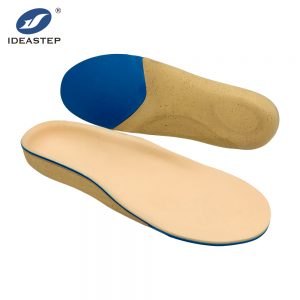
Customized orthotic insoles can be customized according to each person’s foot condition. The specific operating steps are roughly as follows:
1. Assessment and Prescription
The first step is to conduct a comprehensive assessment of the patient’s feet and lower limbs. This may involve a physical examination, biomechanical analysis, gait assessment, and gathering information about the patient’s medical history and specific needs. A podiatrist, orthotist, or other qualified healthcare professional typically performs this assessment and prescribes the orthotic insoles.
2. Impression or Scanning
Once the assessment is complete, the next step is to capture an impression of the patient’s feet or scan them using advanced technology. Traditionally, impressions were made using plaster casts, but now digital scanning techniques are more commonly used. These scans or impressions provide detailed information about the contours of the feet and help in creating a customized design.
3. Design and Manufacturing
With the foot data obtained from the assessment, a skilled orthotic technician or orthotist will create a design for the orthotic insoles. Using computer-aided design (CAD) software or specialized orthotic design systems, they will develop a tailored solution that addresses the individual’s specific needs. The design takes into account factors such as arch support, cushioning, pressure distribution, and any specific modifications required based on the assessment findings.
4. Material Selection
Orthotic insoles can be made from various materials, including foam, cork, leather, plastics, or composite materials. The choice of material depends on factors such as the patient’s condition, activity level, weight, and preferences. The manufacturer will select the most appropriate material(s) based on the design specifications to ensure comfort, durability, and performance.
5. Fabrication
Once the design and material selection are finalized, the actual fabrication of the orthotic insoles takes place. Skilled technicians or orthotists use specialized equipment and techniques to shape, mold, and assemble the insoles according to the design specifications. This may involve heat molding, grinding, cutting, and layering different materials to achieve the desired fit and function.
6. Fitting and Adjustment
After the orthotic insoles are manufactured, the patient returns for a fitting appointment. The healthcare professional ensures that the insoles fit properly within the patient’s shoes and make any necessary adjustments to optimize comfort and function. They may also provide instructions on wearing and gradually adapting to the new orthotics.
It’s important to note that the process may vary slightly depending on the manufacturer and their specific workflows. If you’re looking for a customized manufacturer of orthotic insoles, it would be best to consult with a local podiatrist, orthotist, or healthcare professional who can guide you to reputable manufacturers or clinics in your area.
Related product links: https://www.aideastep.com/product/quik-orthoses-former/
